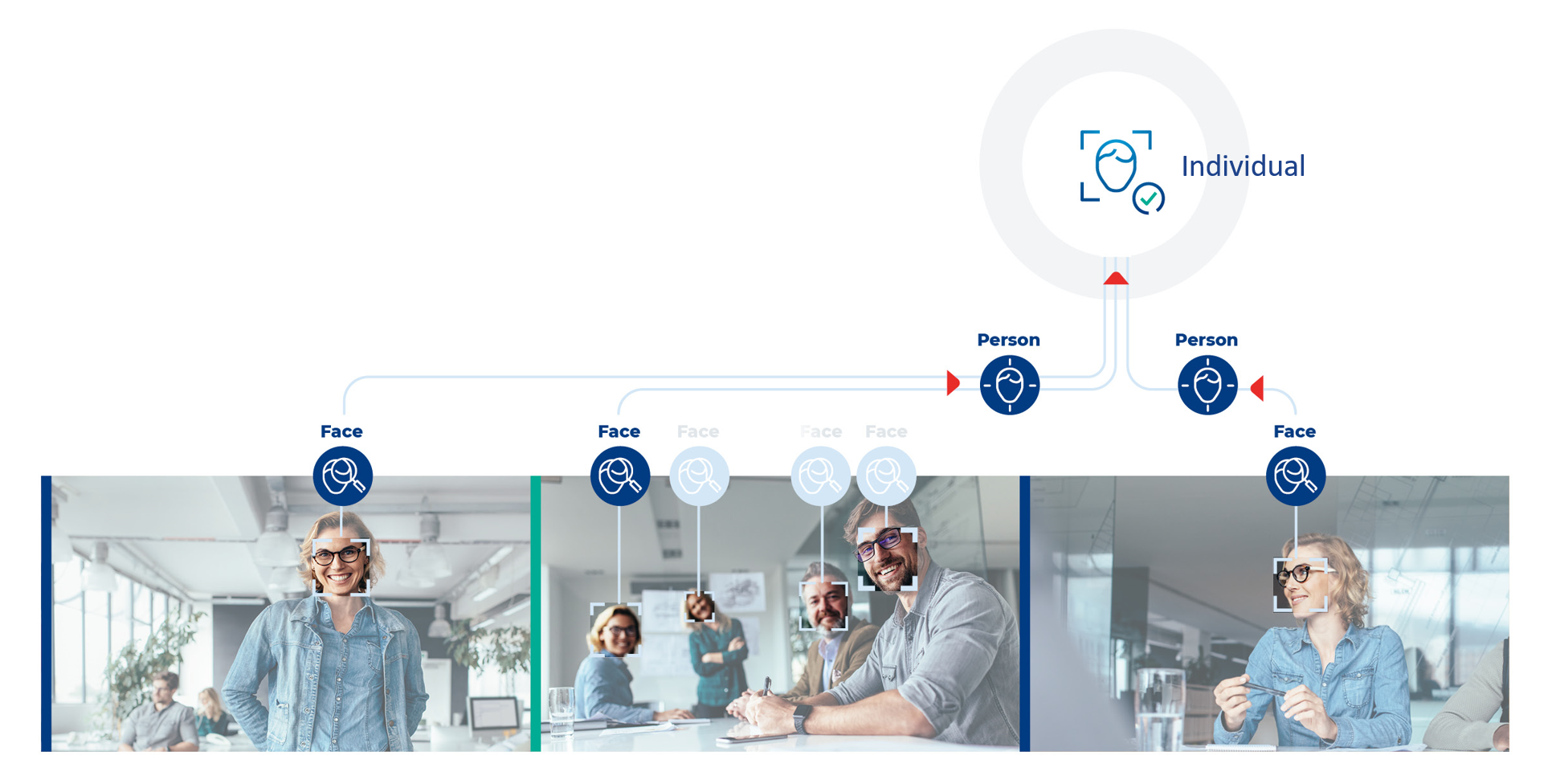Grouping
Grouping is a process of organizing detected faces into groups based on their biometric similarity. In SmartFace Platform, each group of similar faces represents a unique individual. Therefore, this individual consists of a set of faces which are similar based on their matching score. The grouping functionality, the same as matching, is based on comparison of biometric templates extracted from detected faces. For more information about this topic, see Matching explained.
The grouping process is limited by the number of faces which can be grouped. Because of this limitation, the grouping process behaves differently when performed on live video streams or uploaded video and image files. See the explanation below.

Images and video files
Images and video files contain a limited number of faces, therefore grouping may be performed on all the faces detected in the uploaded files. The faces are compared with each other and grouped into individuals based on their similarity.
For example, you may upload a gallery of photos from an event (team building, wedding, etc.). SmartFace Platform automatically detects faces and extracts templates. After that, grouping organizes all similar faces into individuals. If you later upload other photos into the same collection, SmartFace Platform will again compare the new detected faces with all faces in the specific collection and group similar ones into individuals.
Live video streams
A live video stream is a continuously incoming input and may contain a high number of detected faces without a limitation. Therefore, it is not possible to process all faces by grouping at once. It is necessary to limit their number by defining a time period over which SmartFace Platform groups faces continuously in time. Faces detected during the defined time period are compared with each other and grouped into individuals.
For example, you defined the time period of 8 hours for the grouping. SmartFace Platform groups faces of a person who reappears in front of the cameras within this time period into the same unique individual. If the time difference between the appearances of this person is greater than this time period, then SmartFace Platform assigns the newly detected faces of this person to a different individual.